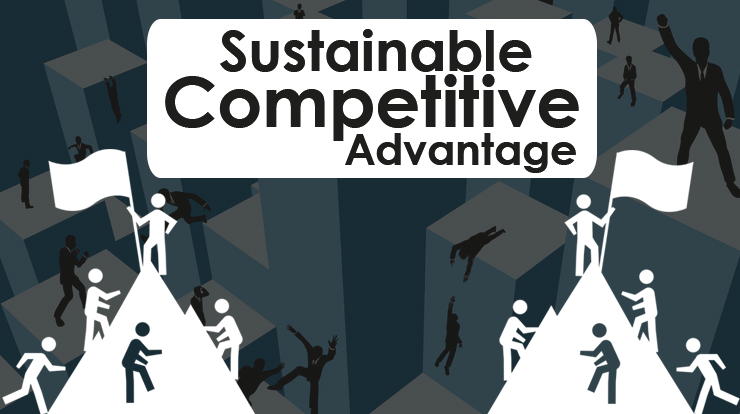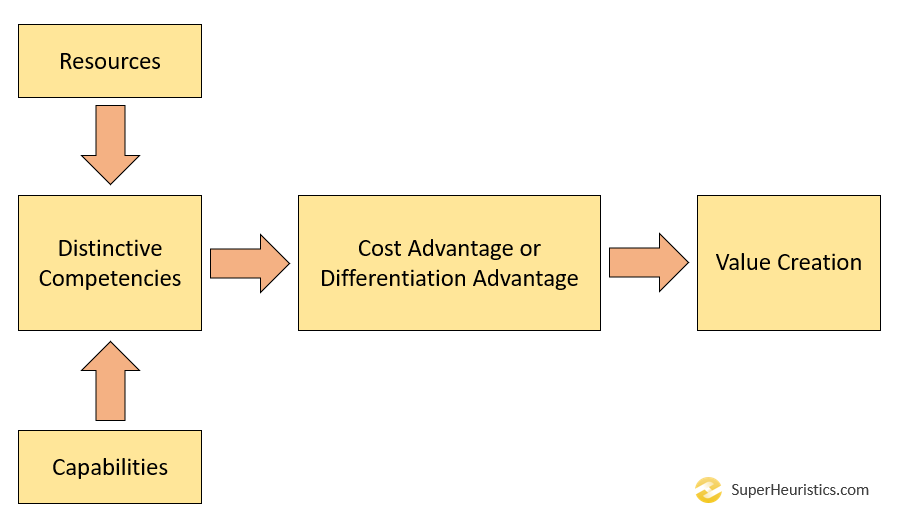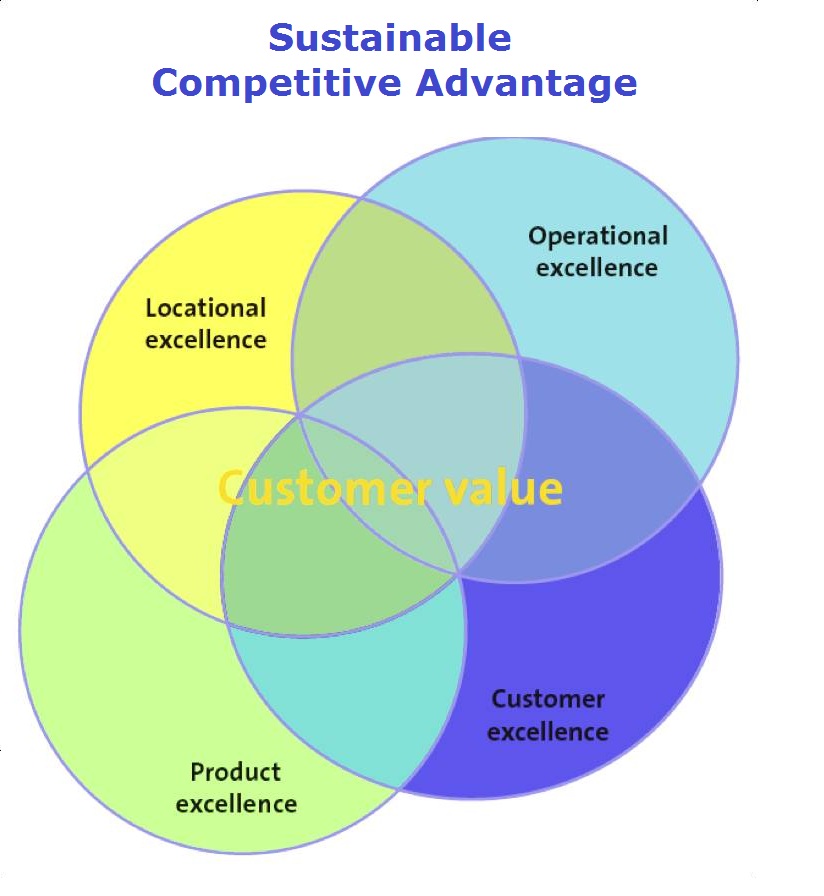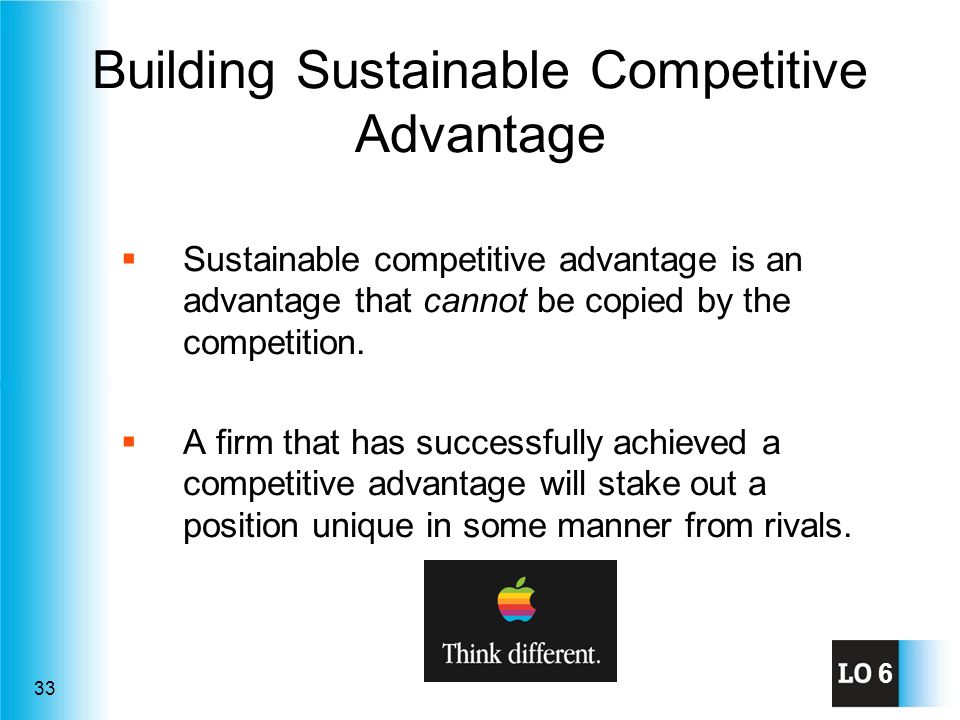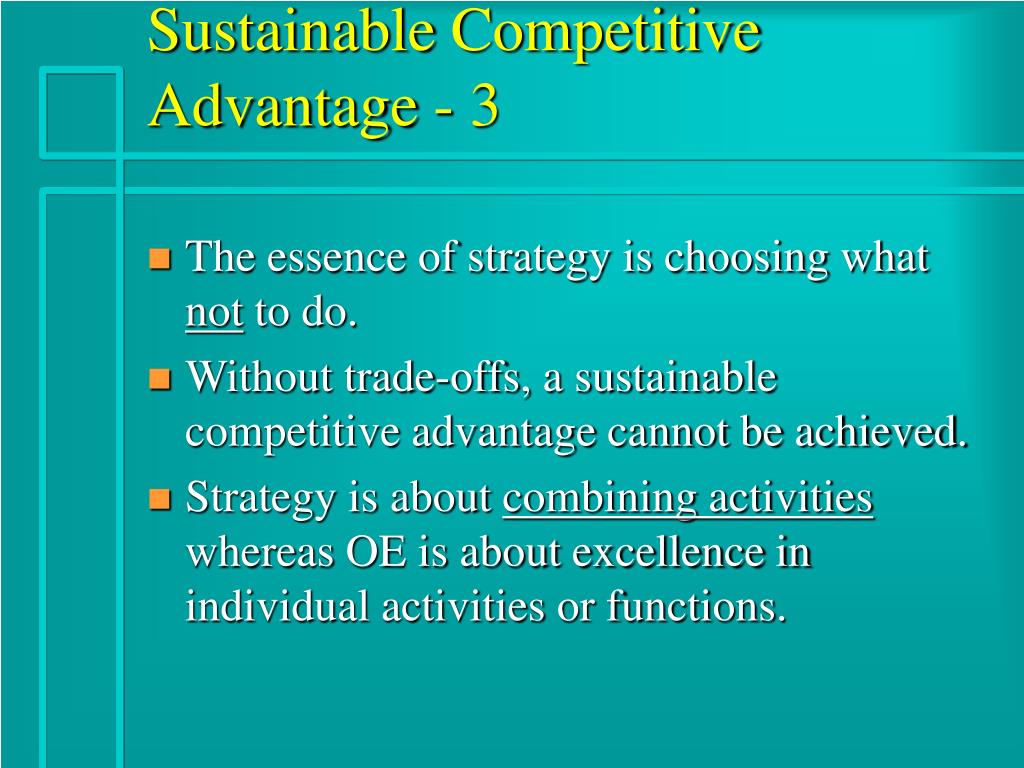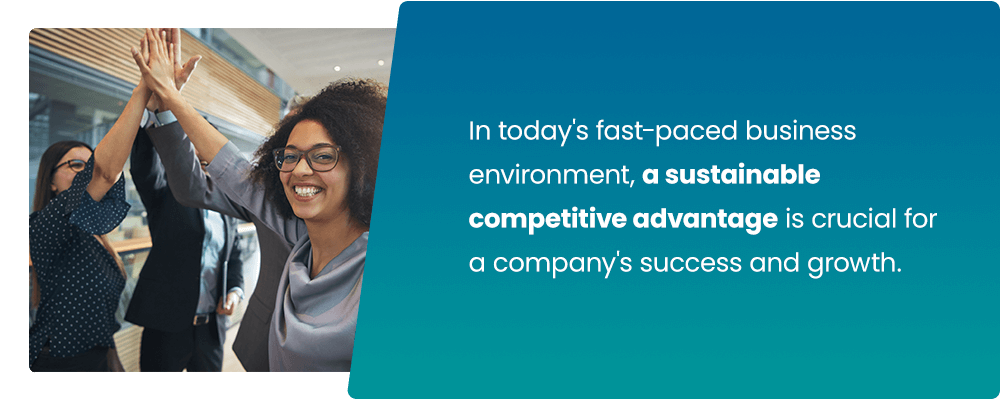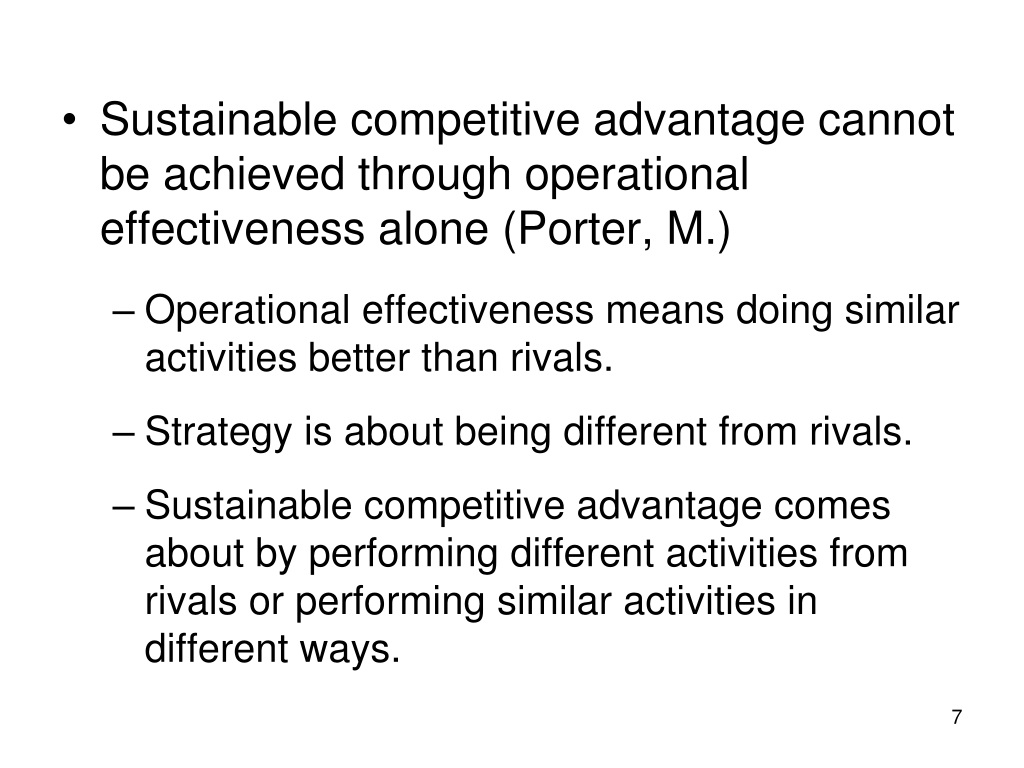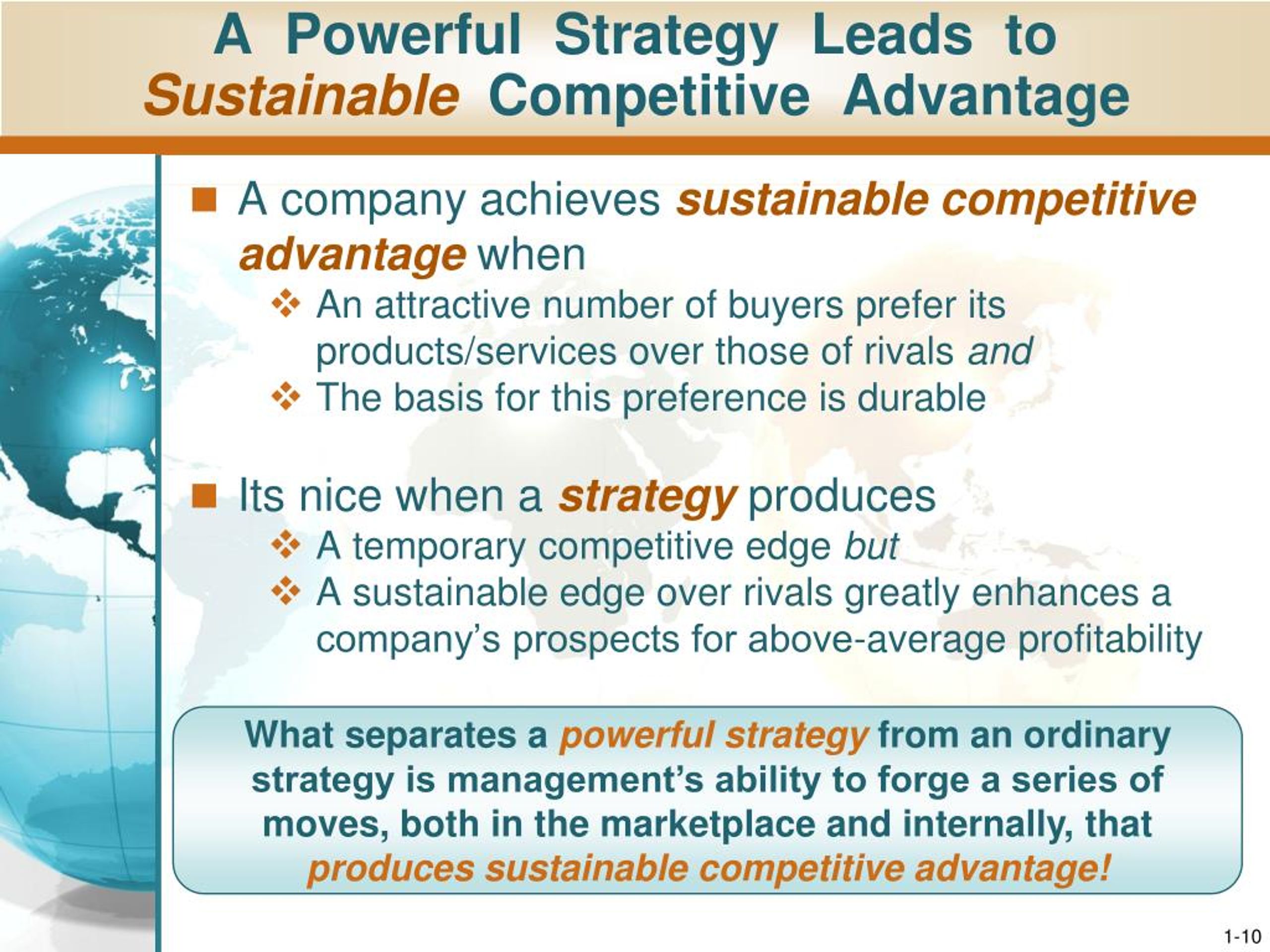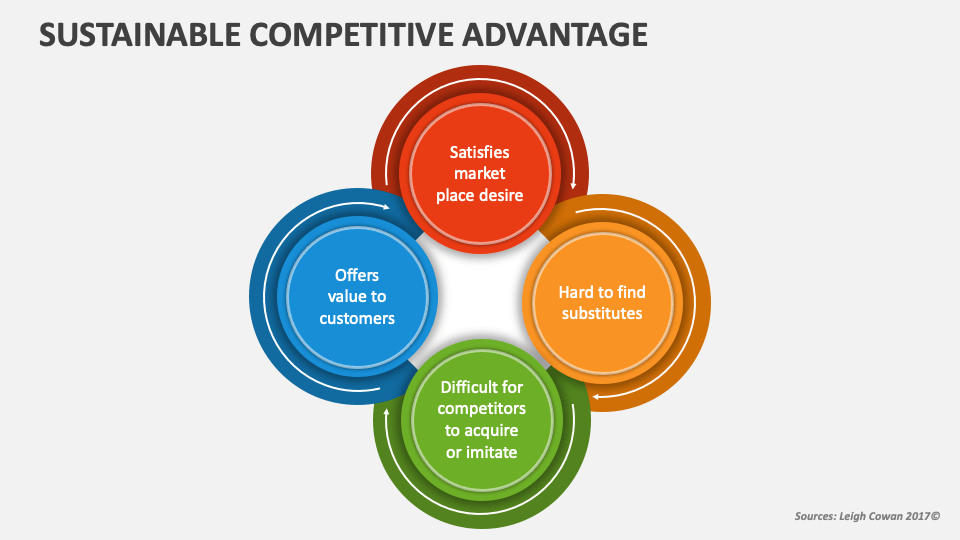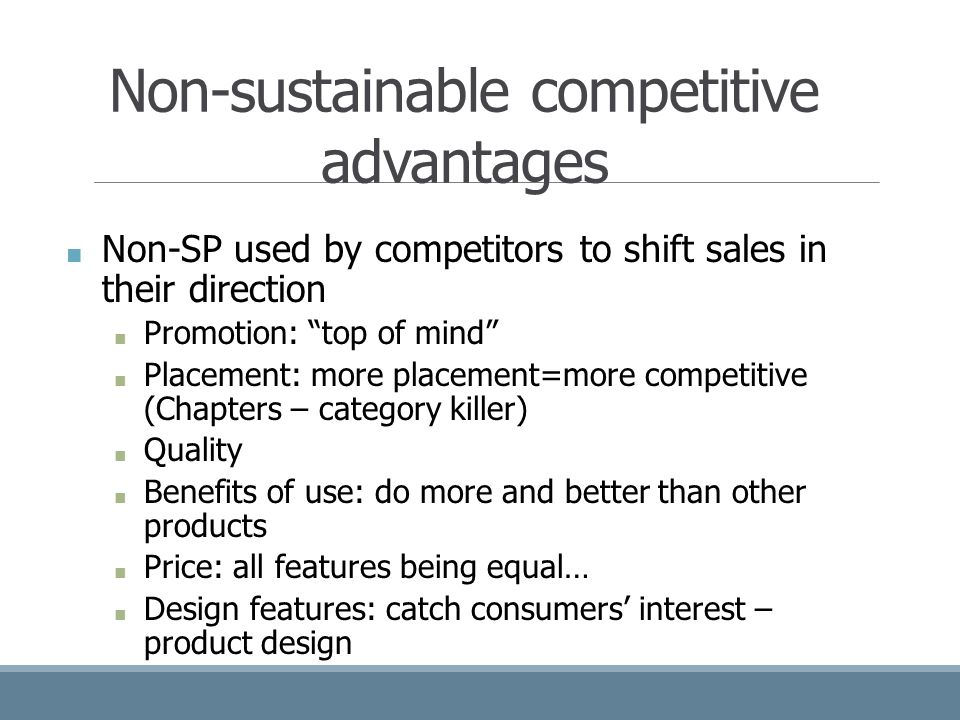A Company Achieves Sustainable Competitive Advantage When
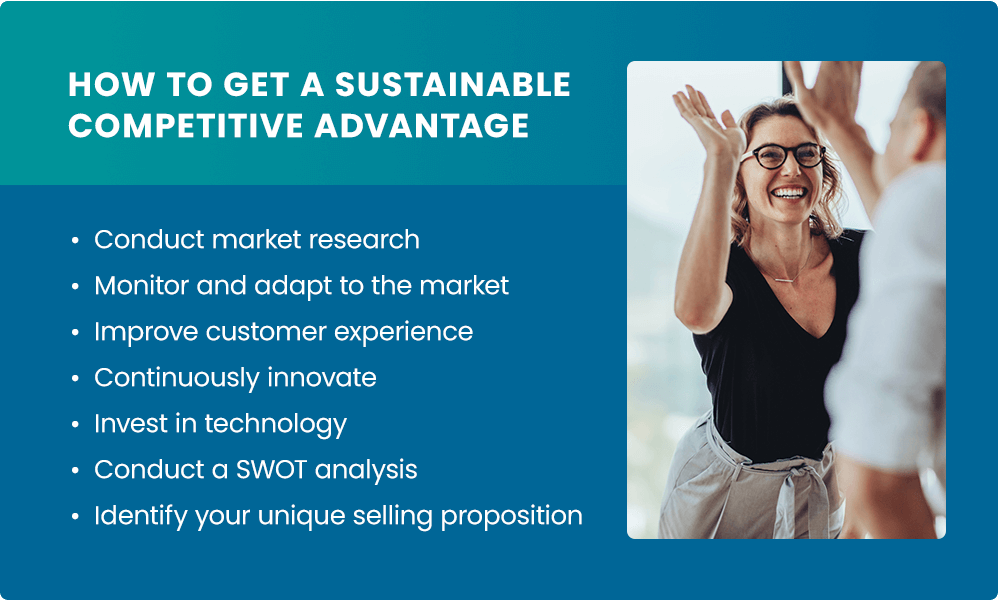
The relentless pursuit of sustainable competitive advantage has long been the holy grail for businesses across all industries. In today's hyper-competitive global market, fleeting successes are common, but enduring market dominance is a rare and coveted achievement. The question then becomes: When can a company truly claim to have reached this pinnacle of business strategy?
Achieving sustainable competitive advantage requires more than just a momentary lead in innovation or a temporary price advantage. It necessitates a complex interplay of strategic foresight, operational excellence, and an unwavering commitment to building and maintaining unique resources and capabilities that are difficult for competitors to replicate. This article delves into the specific conditions and factors that enable a company to secure a lasting edge over its rivals, drawing on expert insights and real-world examples.
Defining Sustainable Competitive Advantage
Sustainable competitive advantage (SCA) is not merely about being better; it's about being different in a way that creates superior value for customers and is difficult for competitors to copy. Professor Michael Porter, a leading authority on competitive strategy, emphasizes the importance of choosing a unique strategic positioning. This means defining a distinct value proposition and targeting a specific customer segment, rather than trying to be all things to all people.
A company achieves SCA when it possesses resources and capabilities that are valuable, rare, inimitable, and organized (VRIO). This framework, developed by Jay Barney, provides a useful lens for assessing a company's competitive potential. If a resource or capability meets all four criteria, it can be a source of sustained competitive advantage.
Key Conditions for Achieving SCA
1. Superior Innovation and Technological Leadership
Companies that consistently innovate and lead in technological advancements often establish a strong competitive advantage. This involves not only developing new products or services but also creating new processes and business models. Apple's continuous innovation in consumer electronics, coupled with its strong brand reputation, has enabled it to maintain a leading position in the market.
However, innovation alone is not enough. The innovation must be difficult to imitate or replicate. Patents, proprietary technologies, and a culture of continuous improvement can help protect a company's innovative advantage.
2. Strong Brand Reputation and Customer Loyalty
A strong brand reputation can create a powerful barrier to entry for competitors. Customers are often willing to pay a premium for products or services from brands they trust. Coca-Cola, for instance, has built a global brand reputation over decades, making it difficult for new entrants to challenge its market dominance.
Customer loyalty is a critical component of SCA. Companies that focus on building strong customer relationships, providing exceptional customer service, and creating personalized experiences are more likely to retain customers and generate repeat business. Loyalty programs and customer feedback mechanisms can further strengthen these relationships.
3. Operational Excellence and Cost Leadership
Achieving operational excellence can lead to significant cost advantages. Companies that can produce goods or services more efficiently than their competitors can offer lower prices, gain market share, and increase profitability. Walmart's efficient supply chain management and logistics have enabled it to maintain a cost leadership position in the retail industry.
However, cost leadership is not sustainable if it comes at the expense of quality or customer service. Companies must strive to optimize their operations without compromising the customer experience.
4. Unique Resources and Capabilities
Unique resources and capabilities are a key source of SCA. These can include proprietary technologies, specialized knowledge, strong relationships with suppliers or customers, or a unique organizational culture. Toyota's lean manufacturing system, for example, is a unique capability that has enabled it to achieve superior quality and efficiency.
These resources and capabilities must be difficult to acquire or replicate by competitors. This often requires years of investment and development. They are also deeply embedded in the organization's routines and processes.
5. Strategic Partnerships and Alliances
Strategic partnerships and alliances can provide access to new markets, technologies, or resources. Starbucks, for example, has partnered with various companies to expand its reach and offer new products and services. These partnerships can create synergies that are difficult for competitors to match.
However, partnerships must be carefully managed to ensure that both parties benefit. Clear communication, shared goals, and a strong commitment to collaboration are essential for success.
Challenges to Maintaining SCA
Even when a company has achieved SCA, it is not guaranteed to last forever. The business environment is constantly changing, and new technologies, competitors, and customer preferences can erode a company's competitive advantage. Blockbuster's failure to adapt to the rise of streaming services like Netflix is a classic example of how a once-dominant company can lose its competitive edge.
Companies must continuously monitor the environment, anticipate changes, and adapt their strategies accordingly. This requires a proactive and agile approach to management.
Looking Ahead: The Future of SCA
In the future, data analytics and artificial intelligence (AI) are likely to play an increasingly important role in achieving SCA. Companies that can effectively leverage data to understand customer behavior, optimize operations, and develop new products and services will have a significant advantage. Furthermore, fostering a culture of innovation and adaptability will be crucial for companies to thrive in a rapidly changing world.
Ultimately, achieving and maintaining sustainable competitive advantage is an ongoing process. It requires a relentless focus on creating value for customers, building unique resources and capabilities, and adapting to the ever-changing business environment. Companies that can master these challenges will be well-positioned to achieve long-term success.


